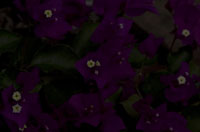With any camera the digital sensor or film needs to receive the correct amount of light for the final image to be correctly balanced in respect to the intensity of the light and the colors and tone of the image. If the sensor receives too much light the image will be washed out and light toned, if the image receives insufficient light the image will be too dark and may appear muddy. If the images receives the correct amount of light the images will be well balanced in respect to colours and tone.
The exposure of the image in a camera is dependant on several factors, the lens aperture or f-stop, the shutter speed and the ISO speed of the digital sensor or film and all these factors interact to give the correct exposure. A basic understanding of these aspects will give you more flexibility and options in your photographic endeavours.
All modern digital cameras have a built in exposure meter which controls the amouint of light that the sensor receives. As mentioned above there are three variables, aperture, shutter speed and ISO speed. With most cameras you can set the camera to a Programme Mode where the camera will set the ISO, shutter speed and aperture. However you will have more flexibility in setting the camera to suit the particular conditions if you take more control over the camera. Aperture Priority Mode will allow you to set the aperture and ISO and the camera will automatically set the shutter speed. A low apperture eg f1.4 or f2.0 will allow creative selective focussing and a higher apperture will allow a greater depth of field to allow more of the image, both close up and distance to be in focus. Shutter Priority Mode will allow you to set the shutter speed and ISO and the camera will automatically set the aperture. A low shutter speed wil allow you to create creative blurred effects and a high shutter speed will allow you to freeze fast action movement.
Setting the Exposure
Softer diffused light available in open shade or with overcast skies will require generally several stops more exposure than a bright scene.
The cameras light meter is designed to give an average reading of the light in the scene and may not be an accurate guide to achieve the results you want.
If the camera meters off a very bright area such as snow, the camera will set the exposure assuming that the snow is a mid tone and a modification may need to be given to the exposure may require additional exposure to compensate for the brightness of the snow. Also when the camera meters of a dark area the exposure may requireless exposure to compensate for the dark area.
Many cameras provide a bracketing function to automatically take additional images that give additional exposure or less exposure as required to give a correctly exposed image. A correctly exposed image will give a more richer and highly saturated look to the image.









